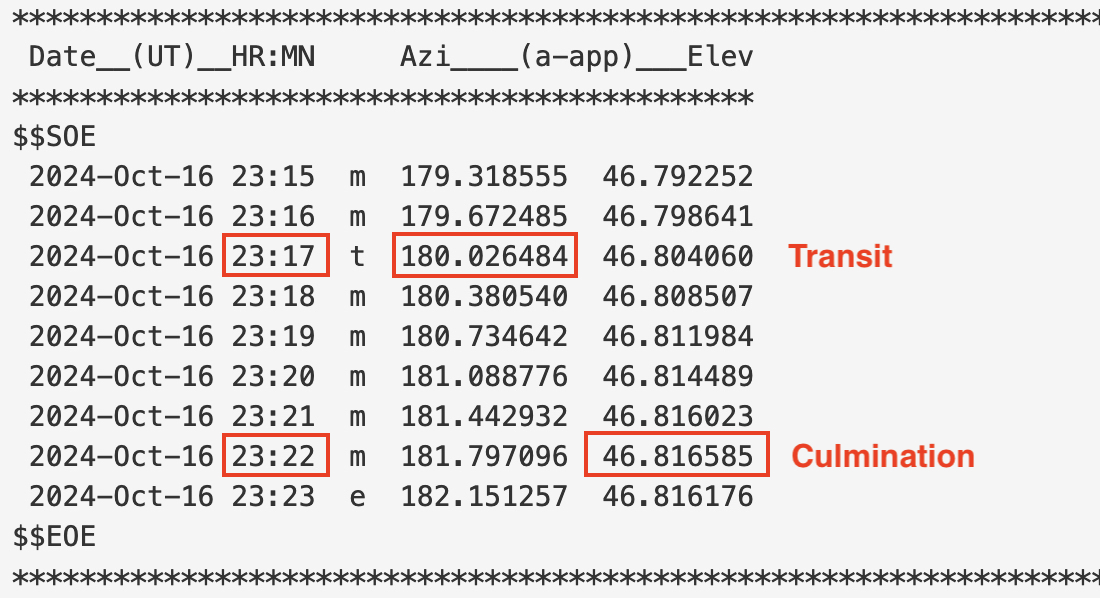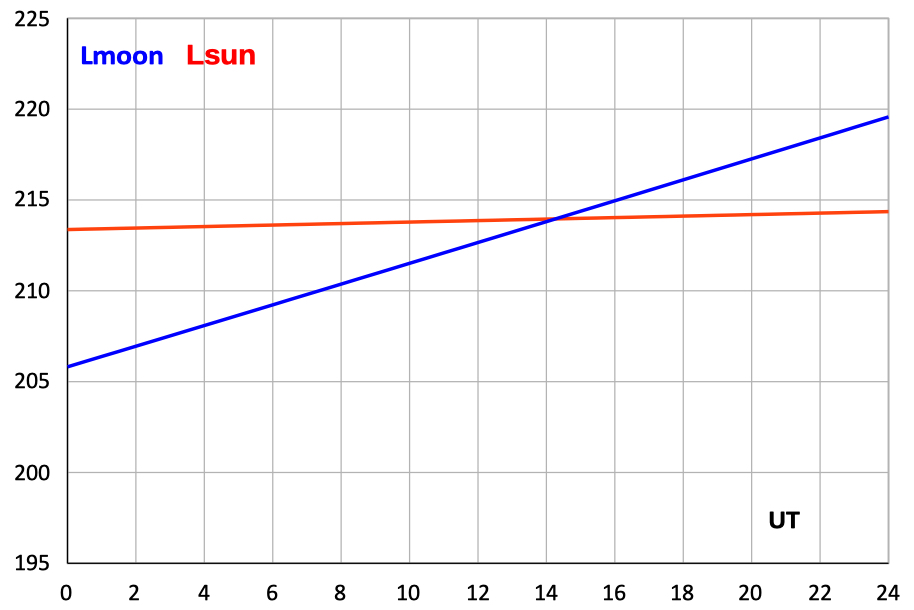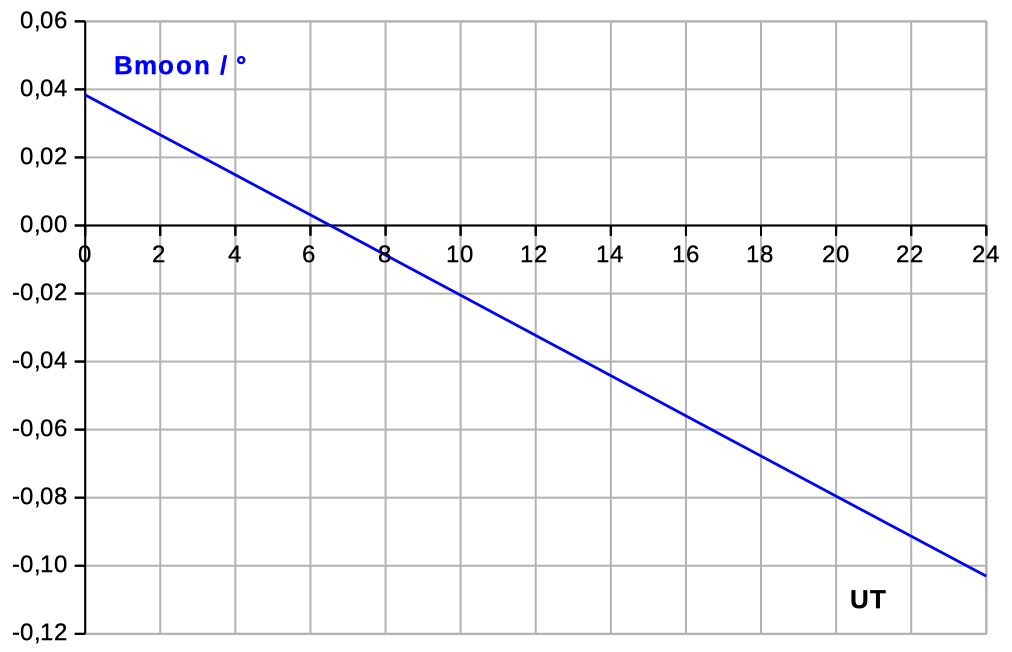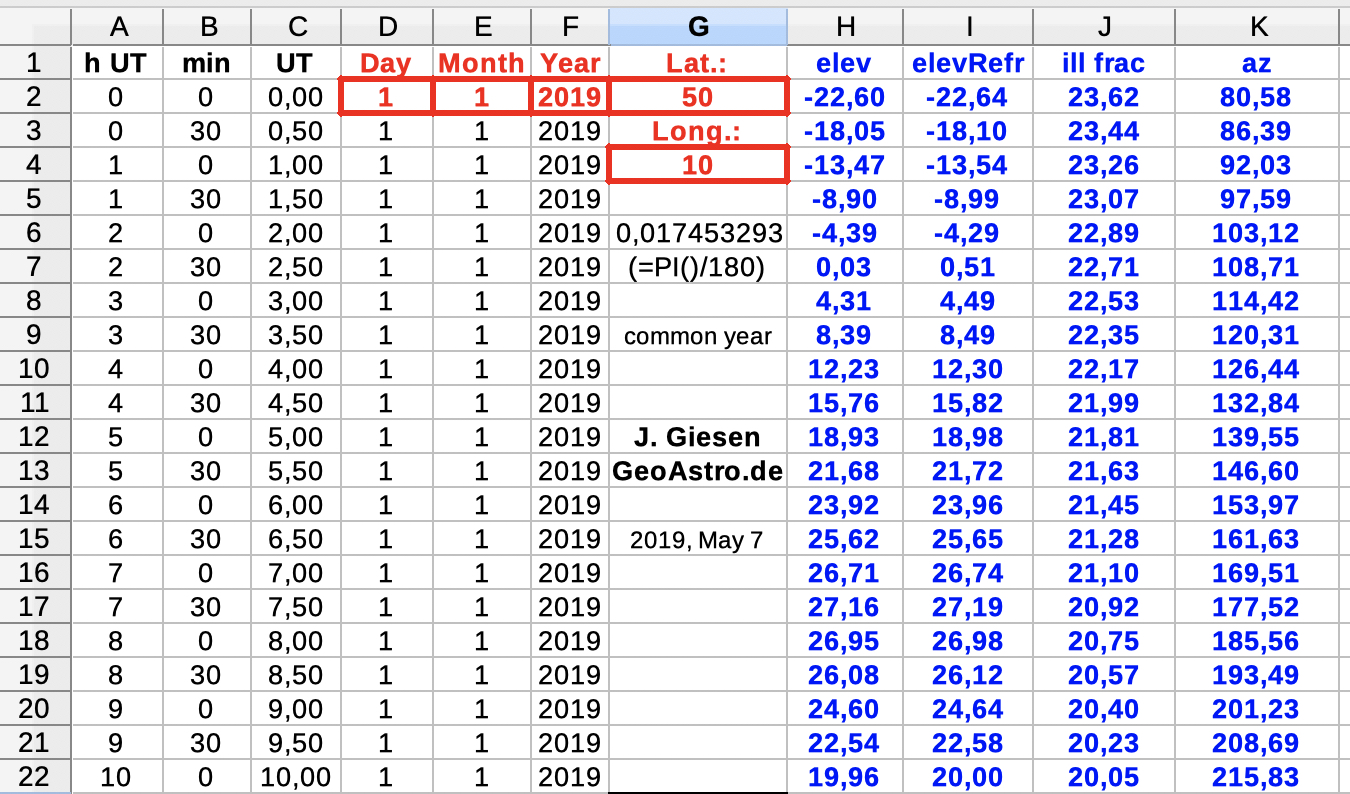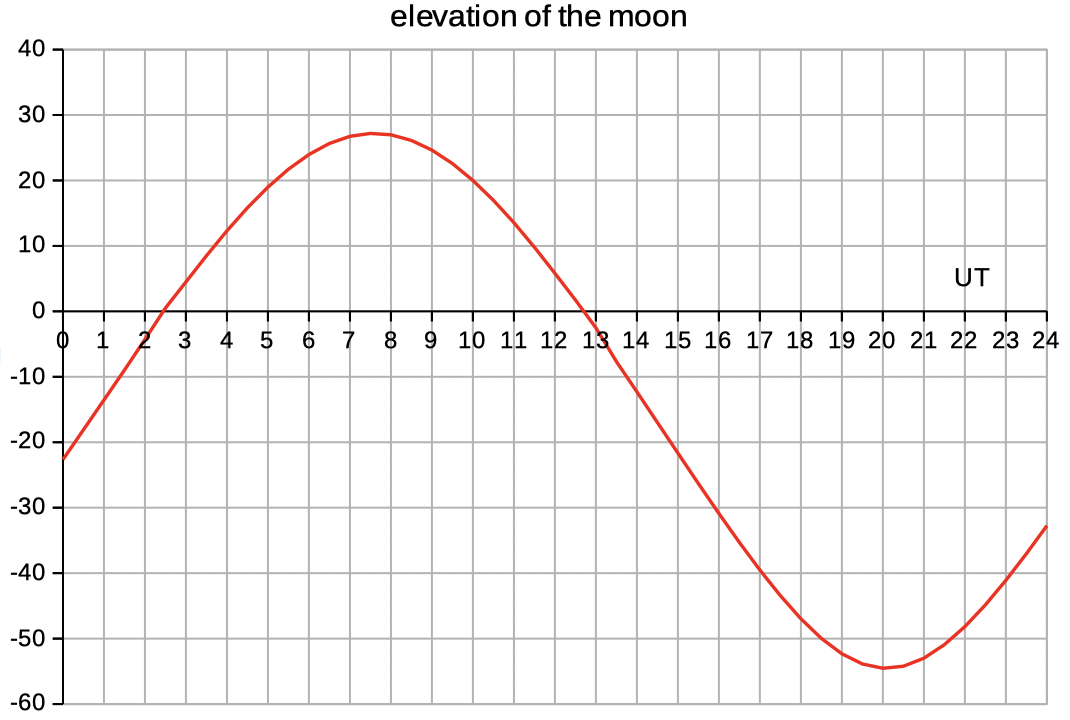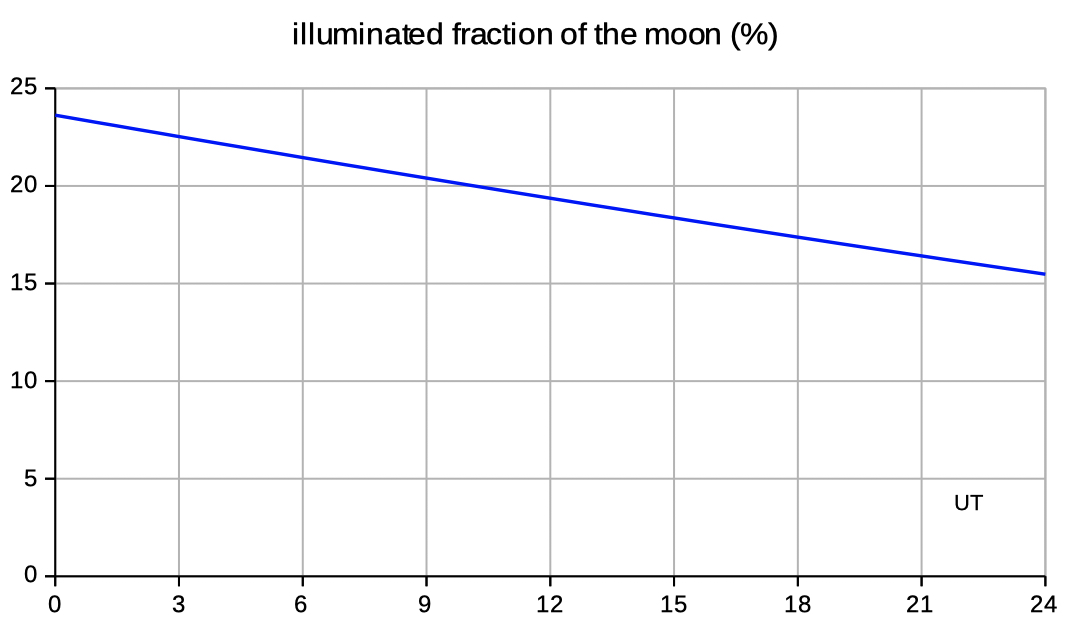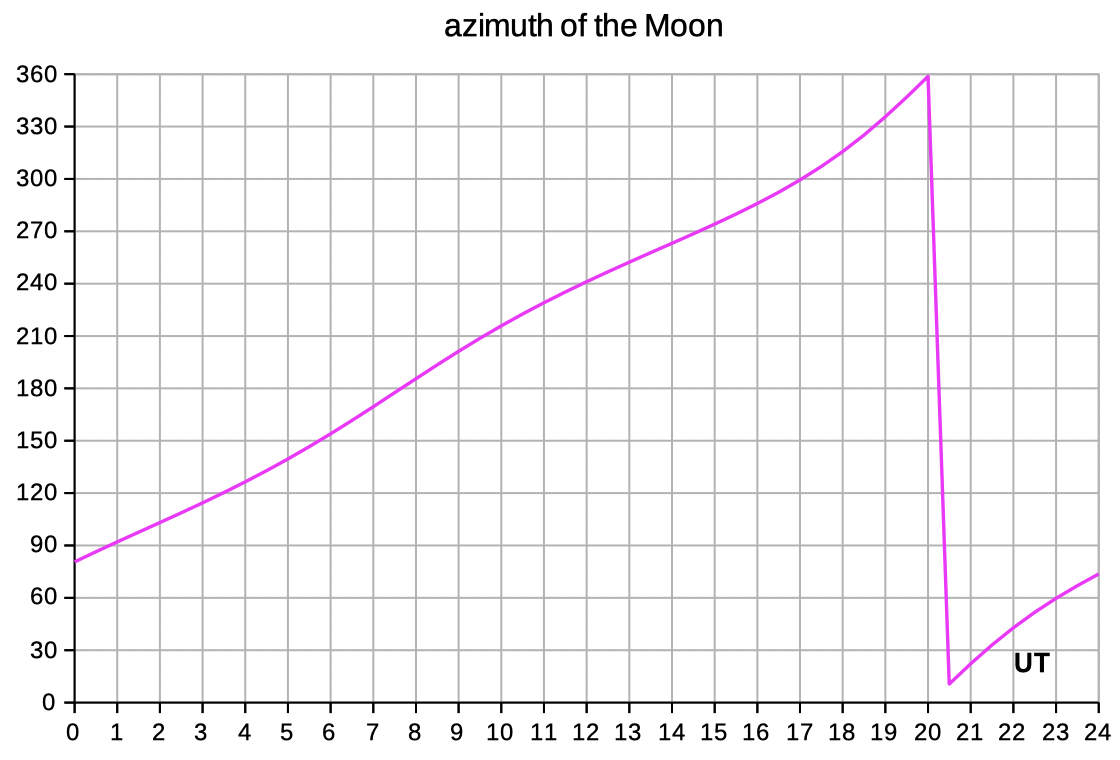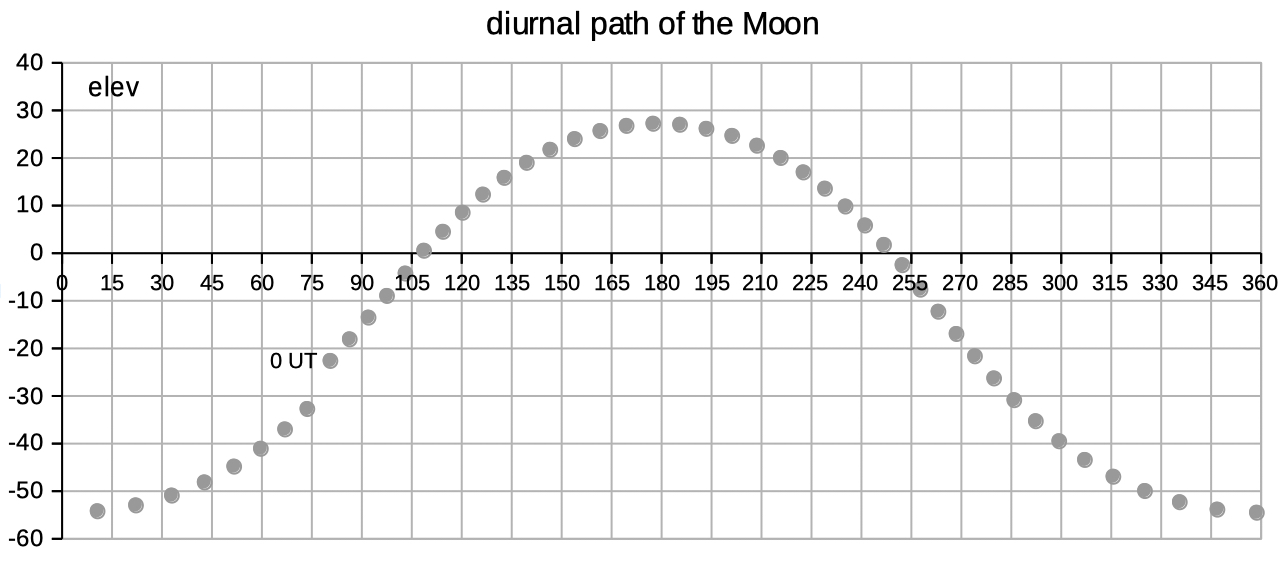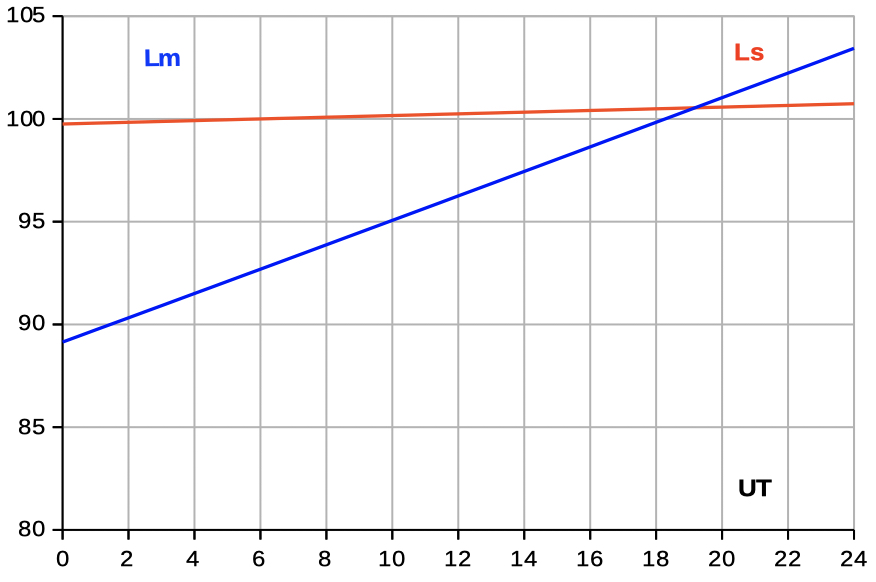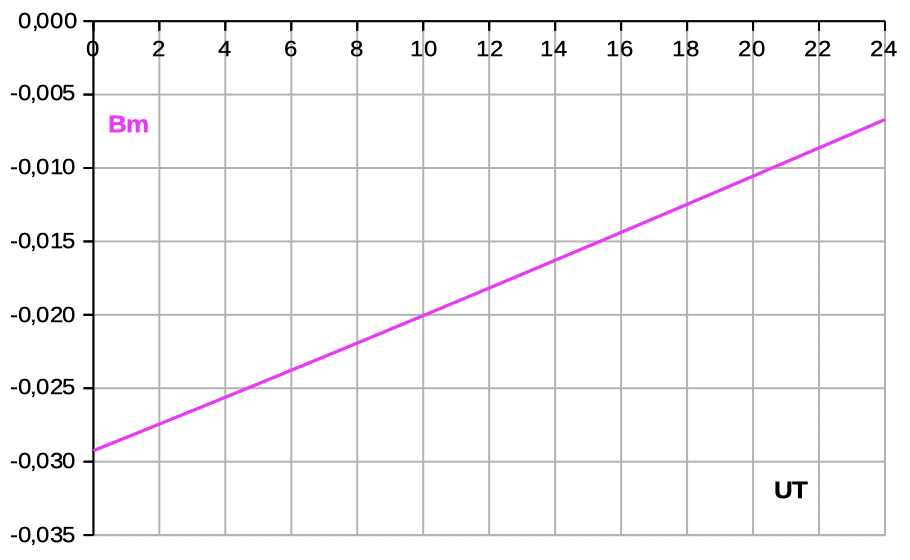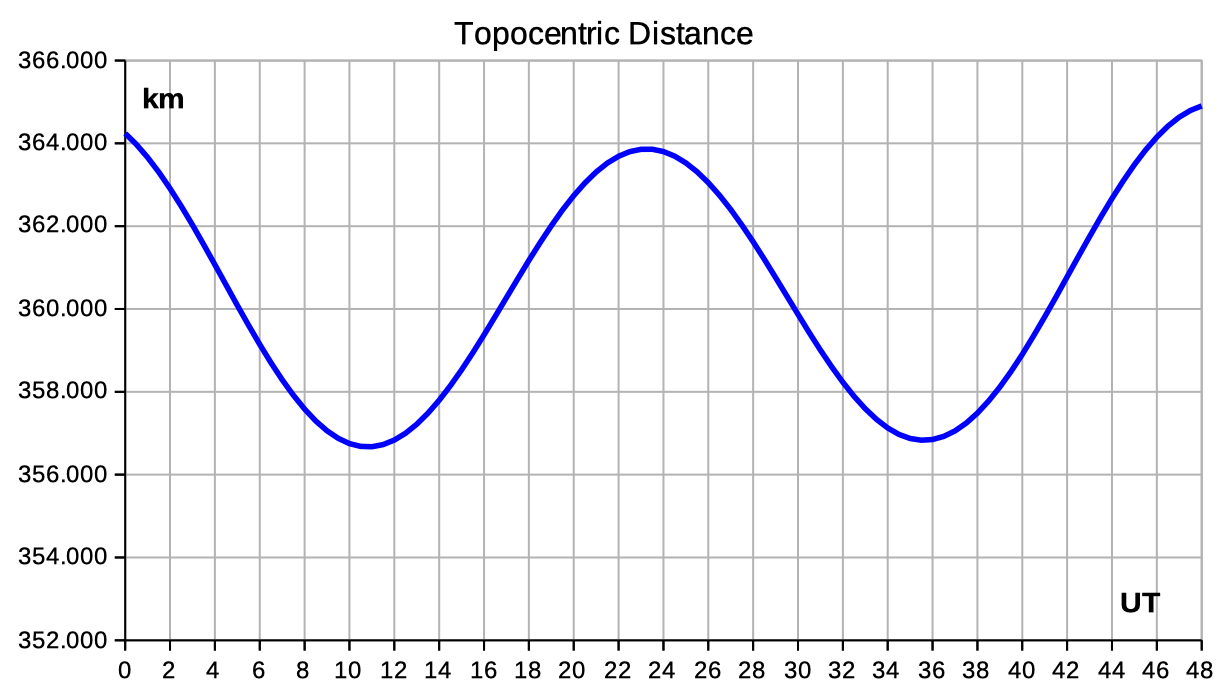Sun position spreadsheets
start
the Moon for a year the Moon for a month
Position of the Moon by
Spreadsheet
for a day
| Select the table 'input': | |
|
Input (red frames): 1) Date, Month, Year |
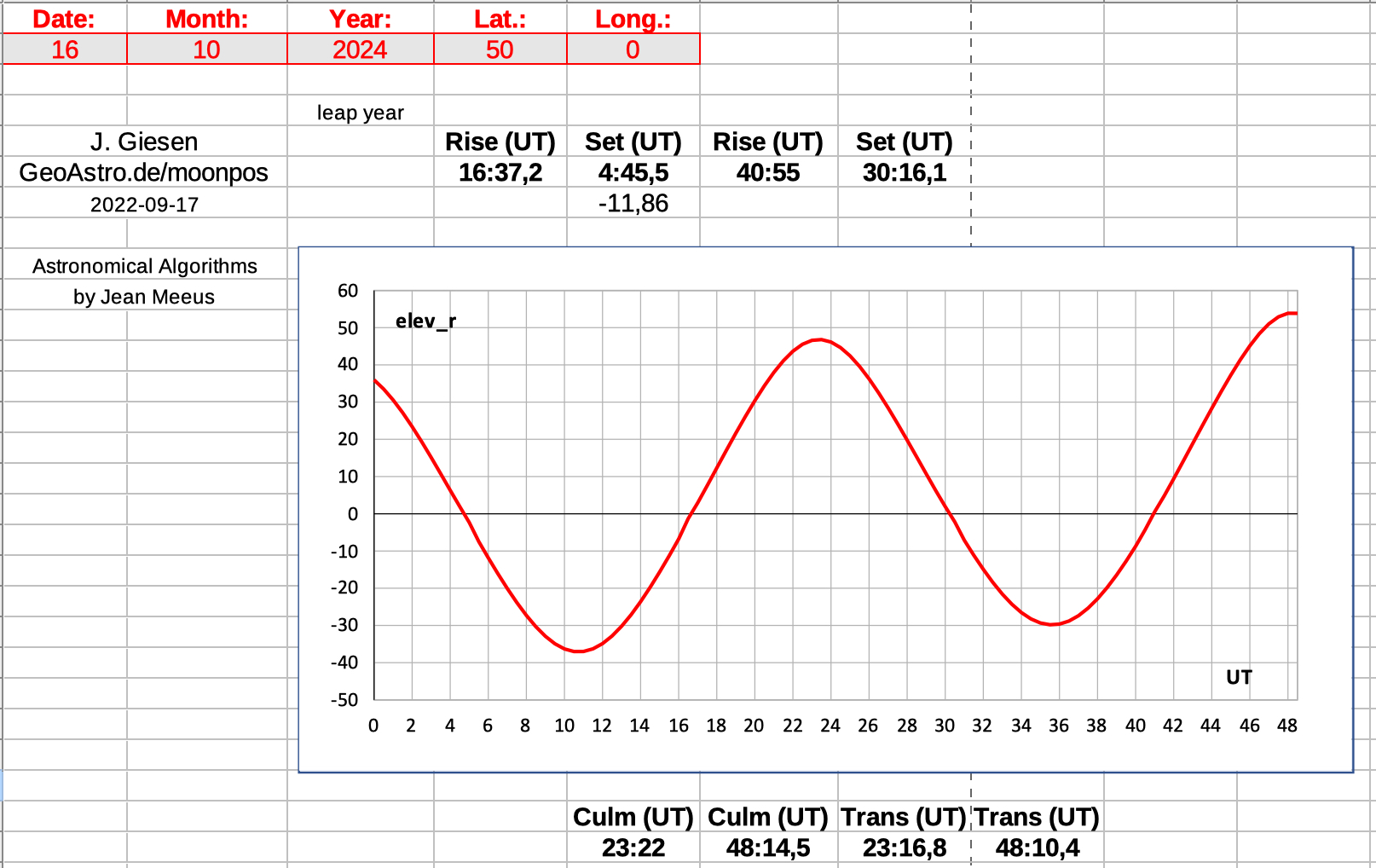 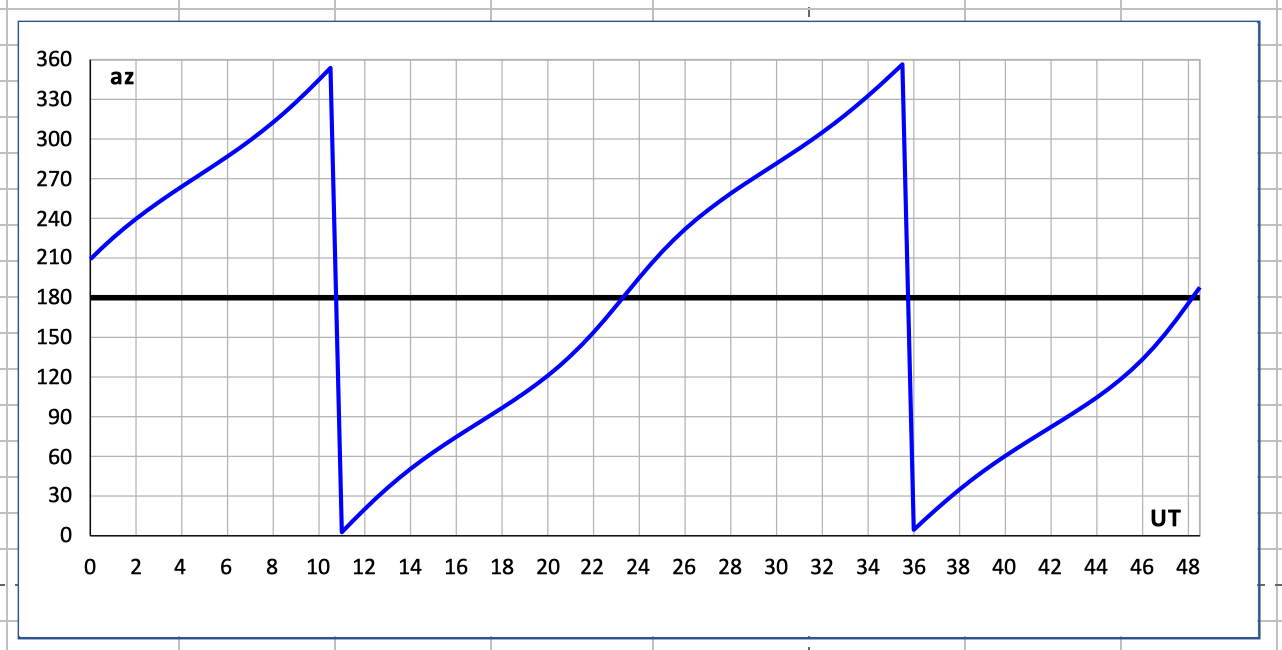 |
| The table 'calc' performs the calculations,
using a lot of auxiliary variables. Don't edit any cell! |
|
| Select 'elev az illum' to see data and diagrams of elevation, azimut and illumination. | |
| Select 'distance' for data of the geocentric distance. |
